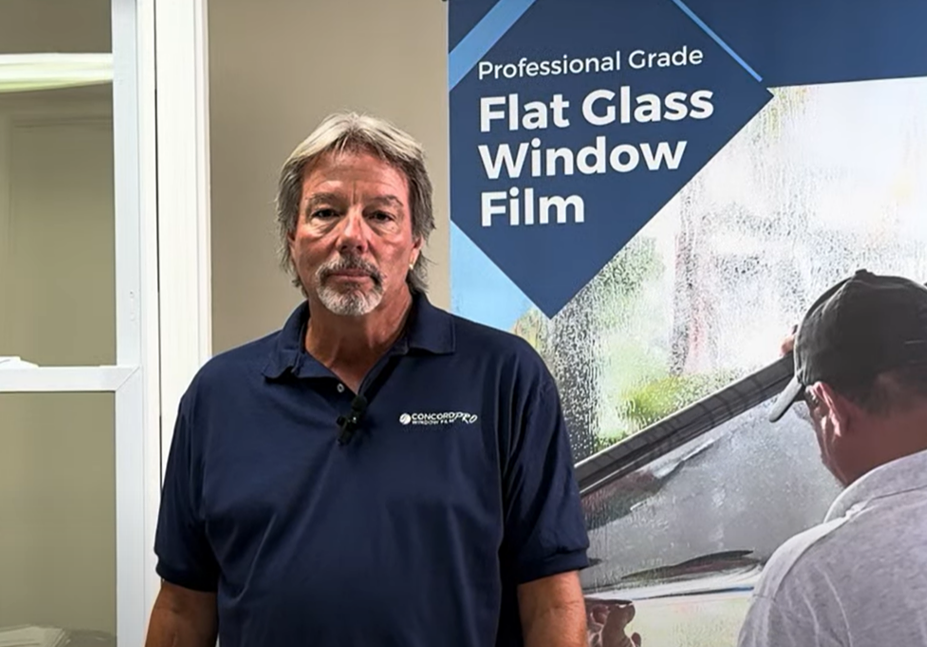
Questions about Products or Ordering?
Call (888) 206-1413

You may be asked by your customers for an “IR film” or “how much infrared radiation does your film block?” These questions have come up because several film manufacturers and resellers have marketed their films as “infrared films” or “IR films”.
Concord Window Film has always followed the National Fenestration Rating Council (the window AND window film industry’s measurement body) and the IWFA (our industry’s association) and not promoted an IR measurement when it comes to our film.
This post will explain why. First, let’s discuss what infrared radiation is:
Infrared radiation is energy coming from the sun that is a part of the overall electromagnetic spectrum – the energy that reaches earth from the sun. About 50% of the energy that hits the earth’s surface is in the form of visible light, 40% is infrared and longer waves like radio and microwaves, and the remaining 10% is UV light and shorter waves like x-rays and gamma rays.
Infrared radiation refers to electromagnetic waves with longer wavelengths than those of visible light. The range of infrared radiation typically spans from approximately 700 nanometers (nm) to 1 millimeter (mm).
Infrared radiation is often thought of in a basic way as heat energy because infrared radiation can’t be seen, but we can feel it as heat. But the reality is that all solar energy that reaches earth contributes to heat.

Some films equate heat rejection only with infrared light rejection – so called “IR films”. And based on what we learned above, it may seem logical to talk about window film’s heat rejection ability in terms of how much infrared radiation it blocks.
However, there are reasons why infrared should not be used as a standard measurement for heat with respect to window film:
The NFRC (National Fenestration Rating Council) is an organization that develops and implements energy performance ratings for windows, doors, and skylights in the United States. While the NFRC primarily focuses on evaluating and rating the thermal performance of fenestration products, it does not specifically test infrared radiation transmission.
The NFRC’s primary objective is to provide consumers with standardized information about the energy efficiency of windows, allowing them to make informed decisions when purchasing or specifying window products. To achieve this, the NFRC conducts tests and provides ratings based on factors such as U-factor (which measures heat loss or gain), Solar Heat Gain Coefficient (SHGC), Visible Light Transmittance (VLT), and (for windows) Air Leakage (AL).
The NFRC also rates window films and when they do, they don’t report IR either. The NFRC uses SHGC. SHGC encompasses all the energy causing heat (including the IR), and it gives the true picture of the film’s performance.
Recently, the IWFA came out with a stance on using infrared radiation measurements because of the confusion that the marketing of “IR films” is having in the marketplace with consumers.
According to Darrell Smith, IWFA Executive Director, “Consumers need a way to compare one product from three different manufacturers and compare which is the best infrared reflector,” says IWFA executive director Darrel Smith. “IR rejection alone is not a measurement of the total heat control of a glazing system. You have to use the Solar Heat Gain Coefficient.”

They propose a measurement called IRER – or Infrared Energy Rejection that is to be defined as the amount of infrared energy in the total 780-2500nm infrared range that the film rejects.
Our solar control film is rated by the NFRC and you can use the performance specifications sheets for each film that are on the website to discuss performance with customers.

The two important measurements for solar control are TSER and SGHC:
TSER is the percentage of incident solar energy rejected by a glazing system which is equal to solar reflectance plus the part of solar absorption which is re-radiated outward.
This is the sum of incident solar energy that is transmitted inside through the glazing system. It includes solar energy directly transmitted and the part of absorbed solar energy that is released inwards. SHGC is the fraction of incident solar radiation that actually enters the building through window glass. SHGC is expressed as a number between 0 and 1. The lower a window’s solar heat gain coefficient, the less solar heat it transmits into the home.
We hope this clears up any confusion about “IR” films and makes it easier for you to speak to customers about solar control film. As always, give us a call if you have any questions.